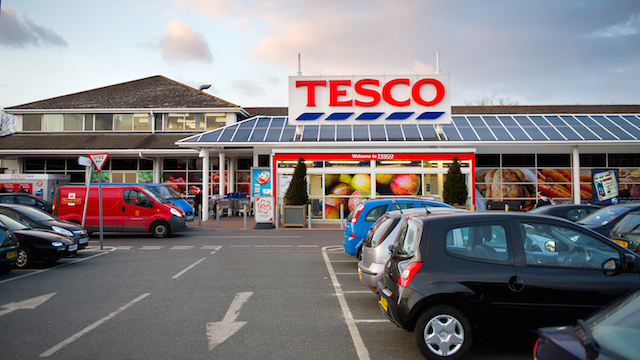Though still blighted by the repercussions of the mistakes made during more troubled times, there is plenty to suggest Tesco has learnt from its past missteps, writes David Alexander in a Tesco analysis following the preliminary results issued overnight.
Dave Lewis’ Tesco train rumbles on, with the grocer posting its first full year increase in like-for-like sales for seven years.
The £6.3 billion loss of two years ago has been consigned to the annals of history, but Tesco’s historic troubles have left a lingering mark on its current results, with statutory pre-tax profits well below expectations, thanks to a £235 million charge from the Serious Fraud Office and the Financial Conduct Authority for overstating its profits in 2014. Past indiscretions aside, there is plenty for Tesco executives to crow about in today’s numbers.
Perhaps the clearest vindication of Lewis’s turnaround strategy was the near 60 per cent increase in operating profit. This is a reflection both of the positive reception shoppers have given to its simplified ranging, enhanced availability and lower core prices, which saw UK volume growth of 1.6 per cent and 1.3 per cent like-for-like growth in the core UK food business, but also the drive for a leaner and more efficient operating model.
Over the year, Tesco increased the proportion of its stores under freehold ownership to 51 per cent, taking annualised rental savings from the re-purchase of stores to £152 million, a substantial contribution to the £226 million in cost savings achieved by the group.
To some extent, Tesco’s improved performance is a reflection of a more buoyant grocery sector, as the market recovers from the scourge of a protracted period of deflation. Tesco is not alone in enjoying the fruits of this resurgence and it is perhaps Morrisons which can lay claim to being the sector’s ‘comeback kid’, thanks to the 1.7 per cent improvement in its full year like-for-likes announced in March.
In terms of its performance against the competition, Tesco can certainly take some solace from its consistent outperformance of rival, Sainsbury’s, where full year like-for-likes were down 0.6 per cent. The latter’s fall from grace only tempered by the encouraging performance of Argos, which represents a growing threat to Tesco’s general merchandise proposition.
Ensuring shopper enthusiasm for the re-invigorated Tesco does not dissipate amid creeping inflation will be crucial to Tesco’s fortunes over the coming year and in this respect its proposed takeover of Booker makes a lot of sense.
Though it remains to be seen how much of the proposed merger will survive the scrutiny of the competition authorities, there are a number of potential benefits, both in terms of the cost savings it is likely to bring, but also the opportunity to gain a greater foothold in the fast growing out-of-home food market. The Booker deal is emblematic of Tesco’s determination to capitalise on its recent momentum.
Though still blighted by the repercussions of the mistakes made during more troubled times, there is plenty to suggest that Tesco has been strengthened by the learning curve of past missteps.
David Alexander is associate retail analyst with GlobalData.






